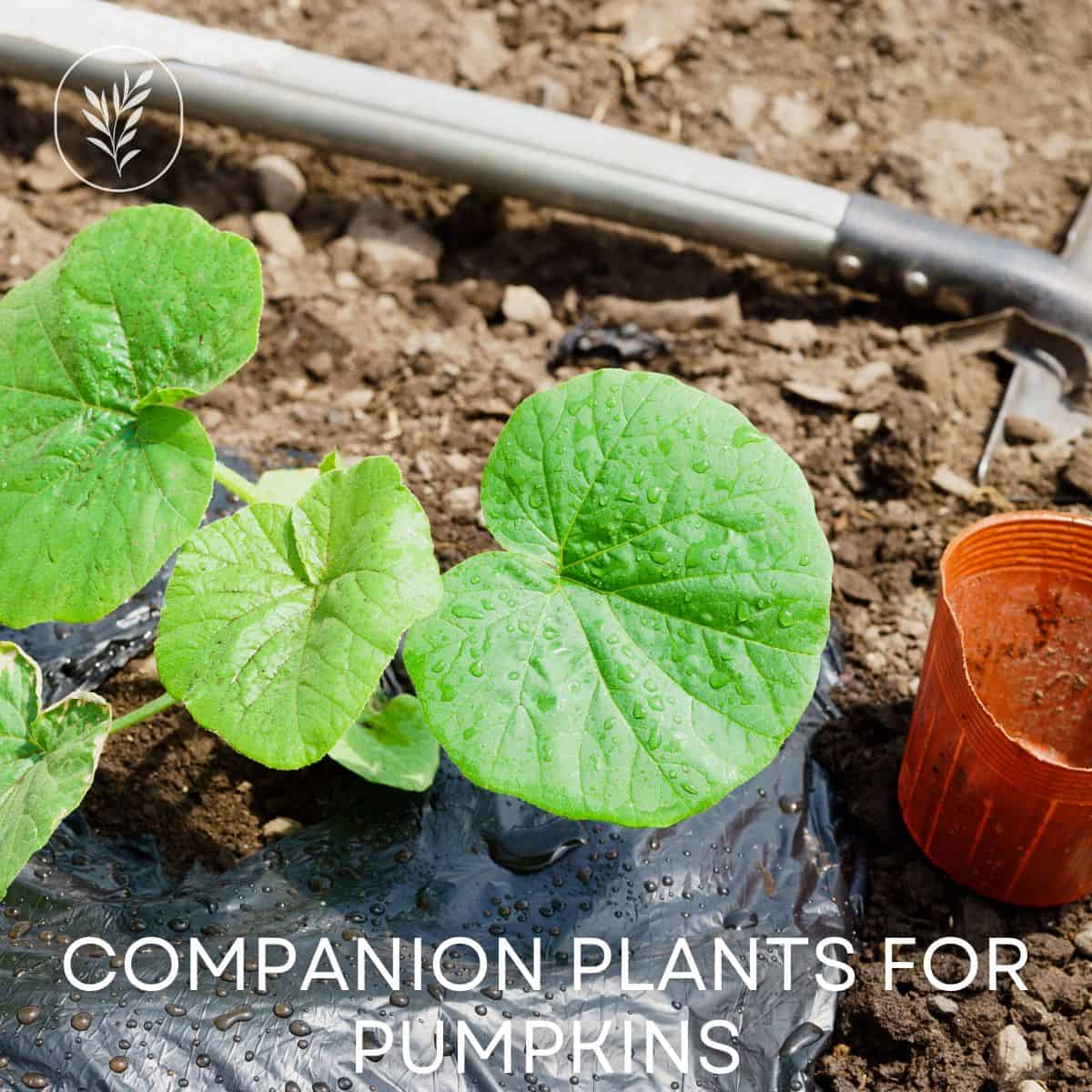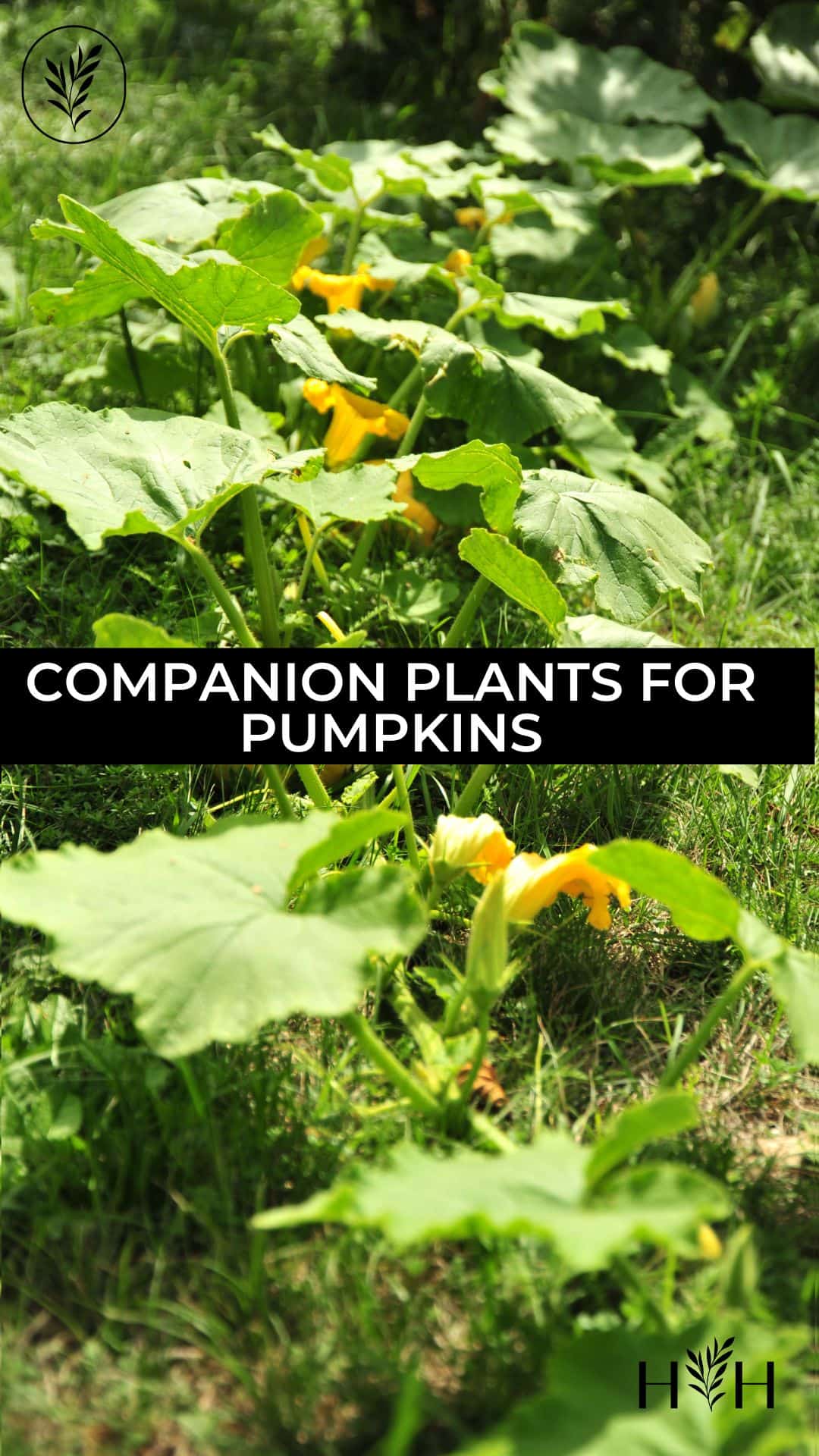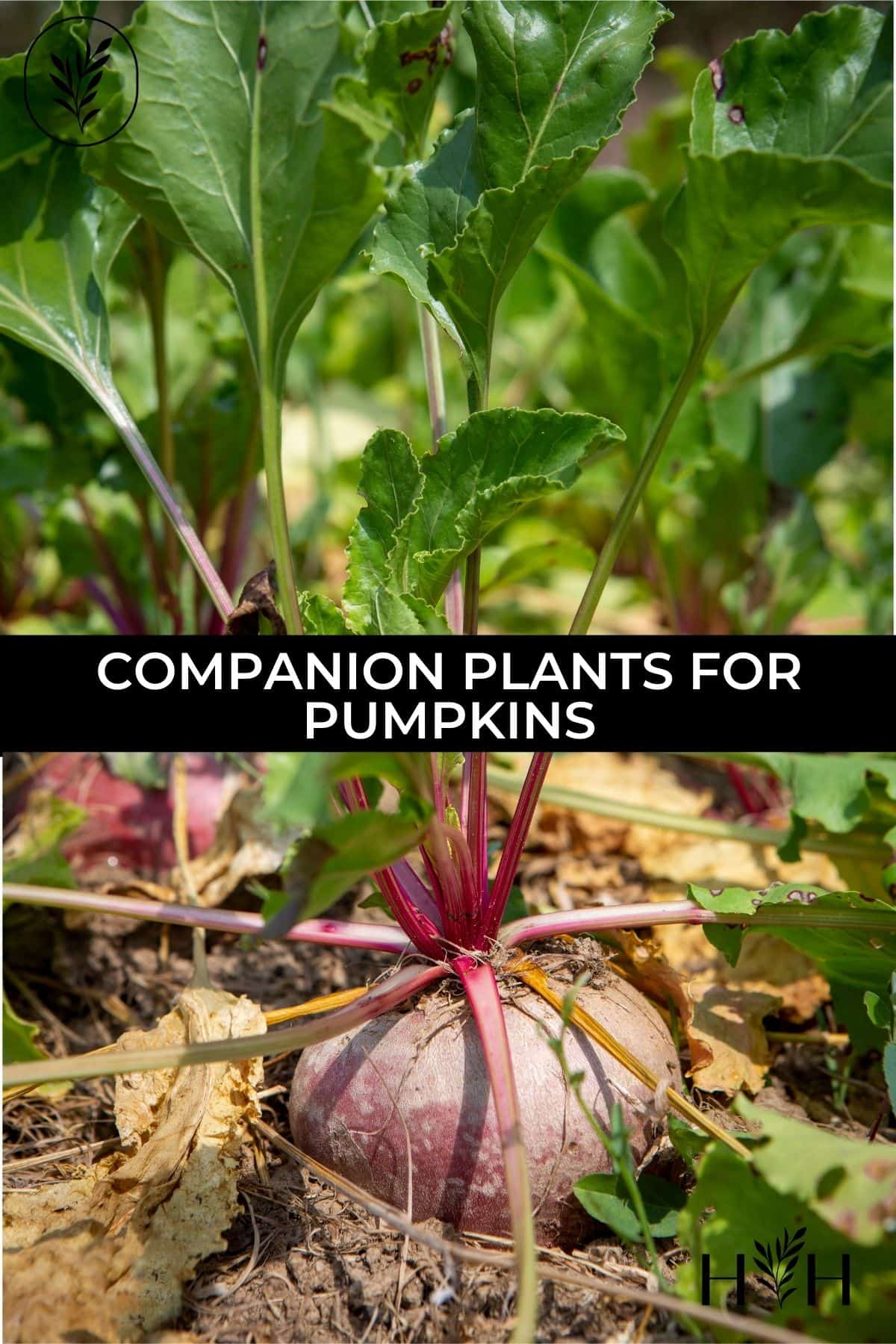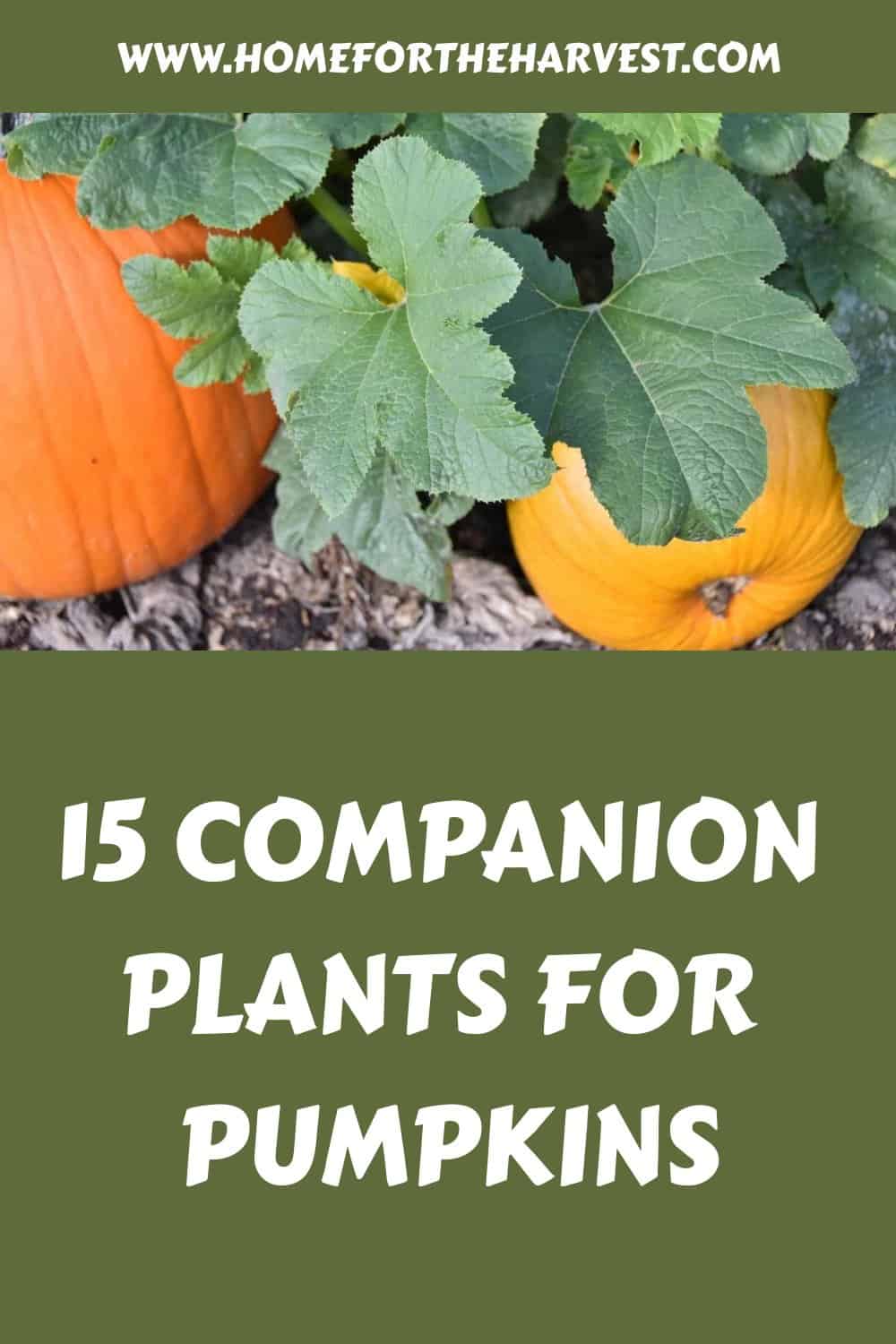Plants make wonderful companion plants for a variety of reasons. There are also quite a few plants that can help you grow the best pumpkin crop possible!
Great companion plants for pumpkins include corn, peas, melons, radish, lettuce, marigold, nasturtium, sunflowers, and borage. These plants have a host of benefits, including attracting beneficial pollinators to the pumpkin blossoms, repelling pest insects, and providing natural weed suppression. Avoid planting potatoes and brassicas like kale, broccoli, cauliflower, cabbage, kale, and collards.
So, if you are thinking about planting pumpkins in your garden, keep reading. This article will cover the best and worst companions for pumpkin plants so your garden can thrive!
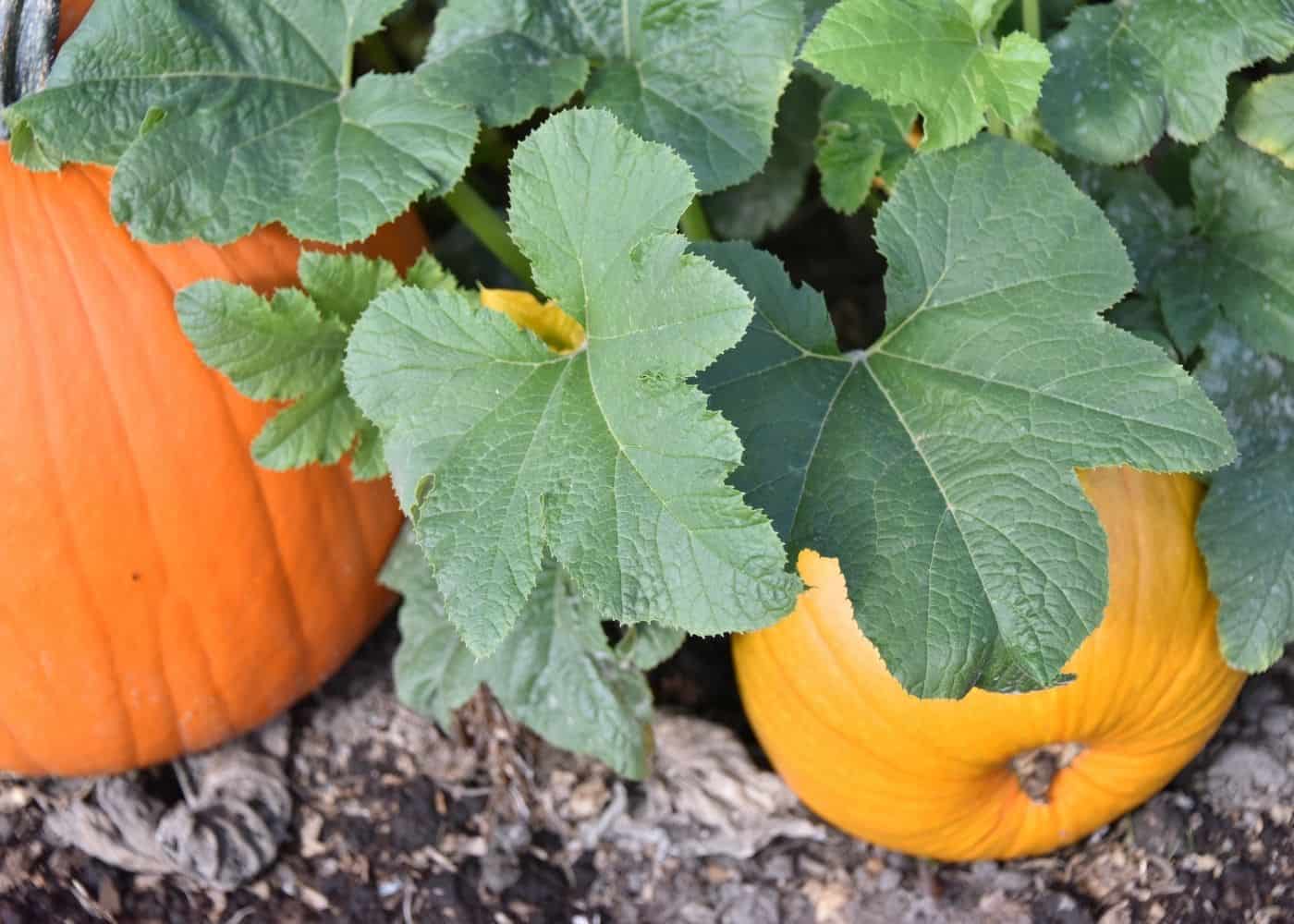
1. More Pumpkins
Pumpkin plants do best if there are lots of pumpkin plants in one area, as the patch tends to attract beneficial squash bees (Peponapis species). These native bees look like honeybees, but the males like to sleep inside squash blossoms (like pumpkin blossoms). Squash bees are excellent at pollinating pumpkins, melons, cucumbers, zucchini, et cetera. So, avoid tilling the garden soil because squash bees build their solitary nests in the ground.
2. Zucchini
Zucchini make great companions for pumpkins because they attract squash bees, similar to pumpkins. These bees pollinate zucchini and pumpkins, producing higher yields. While zucchini is a summer squash and pumpkin is a winter squash, they have similar pollination requirements.
3. Cucumbers
Similar to zucchini and pumpkins, cucumbers attract squash bees that help pollinate the surrounding plants. Cucumbers can be grown up a trellis above the pumpkins so as to maximize space in the garden (and attract even more beneficial pollinators).
4. Hubbard Squash
Hubbard is a type of squash, just like pumpkins. This specific type of squash is particularly attractive to pumpkin pest insects, making Hubbard Squash a great “trap” crop. Some common pumpkin pest insects like squash bugs and squash vine borers like to feed on Hubbard Squash so much that they will be distracted by it instead of eating the pumpkin plants. So, plant the hubbard squash two weeks before the pumpkins and keep it at least a few feet from the pumpkin plants (ideally on the perimeter of the garden).
5. Corn
Corn can be used as a live trellis for small pumpkin cultivars (like these adorable mini pumpkins). Because the pumpkin leaves shade the corn, weeds are kept at bay. In addition, there is an iconic “three sisters” companion planting combination in which pumpkins are planted alongside corn and beans. The beans climb the corn while the larger pumpkin varieties grow their pumpkins on the ground. As a result, the large pumpkin leaves shade out weeds for the other two plants.
6. Melons
Melons are similar to squash in that they attract bees that pollinate both the melons and the pumpkins. In addition, melons attract earthworms which aerate the soil. Lastly, melons plants tend to be high in nutrients, making healthy plants a great addition to the compost along with spent pumpkins for a nutrient-rich compost to use the following year.
7. Peas
Peas are beneficial companions for pumpkins because they are capable of pulling nitrogen from the air down into the soil. Peas are generally harvested in early summer, leaving the roots in the soil to provide extra nitrogen to the pumpkin plants as they grow those giant leaves (that require quite a bit of nitrogen to thrive).
8. Sunflowers
Sunflowers can be used to create a live vertical trellis for some pumpkins. If possible, choose small pumpkin varieties that will not weigh down the sunflower. Branching sunflower varieties perform best since they produce a large branch network from which the pumpkin vines develop.
In addition, sunflowers attract natural pollinators like bees. The sunflowers lure the bees to them and pollinate the nearby pumpkin blossoms as a result. Sunflowers also attract birds in the fall, allowing the birds to eat the seeds. As a result, these birds may also consume some of the pest insects, keeping them away from your ripening pumpkins.
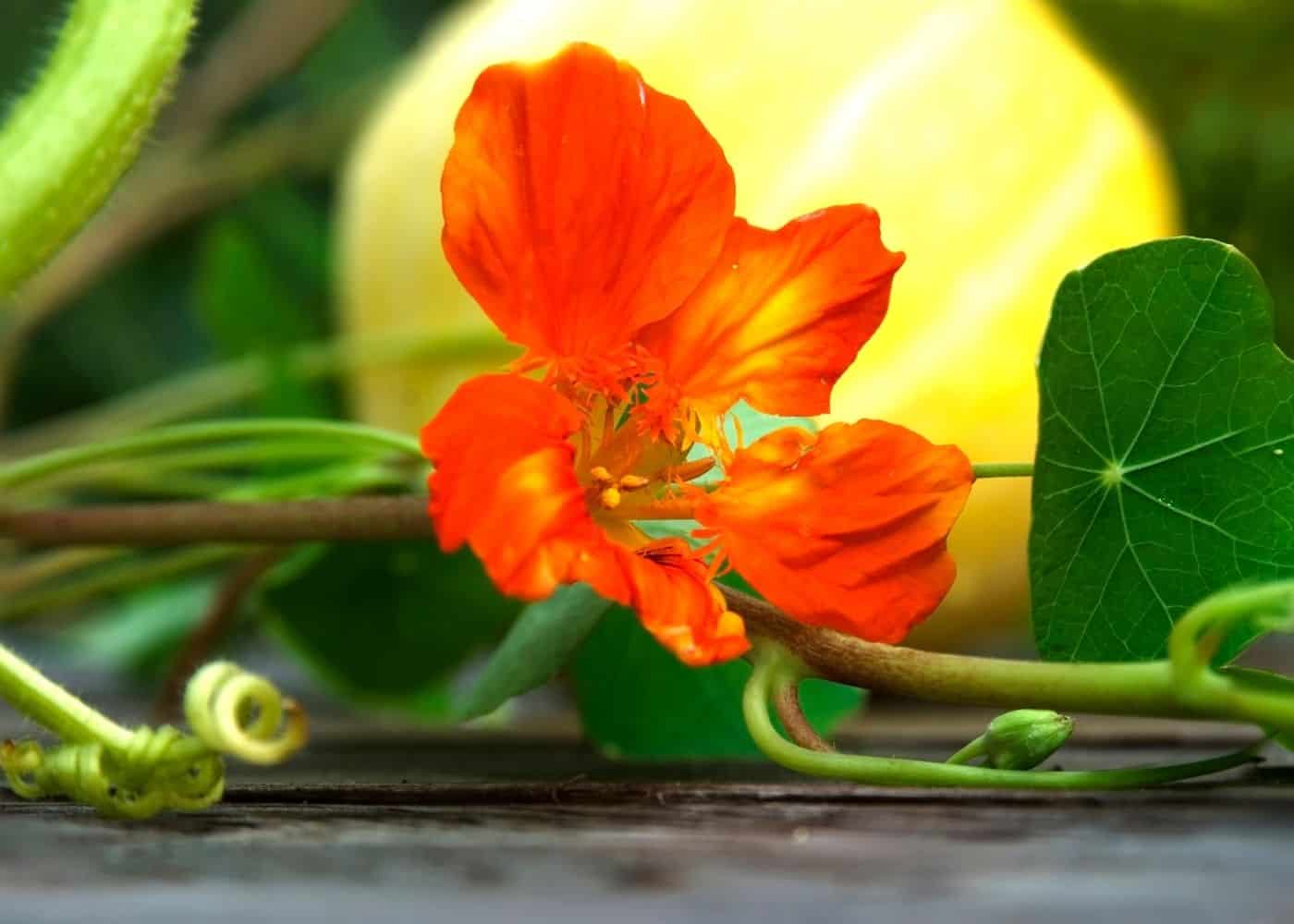
9. Nasturtium
Nasturtiums are effective in repelling striped cucumber beetles, cabbage loopers, and squash bugs (these bugs eat the plants). So, many gardeners plant nasturtiums near pumpkins because they draw the pests away from the pumpkin plants.
10. Marigold
Marigold, like nasturtiums, repels the striped cucumber beetle, cabbage looper, and squash insect. Marigold is also known for repelling nematodes, which are harmful pests in the soil that damage pumpkins. Lastly, marigolds repel aphids, which are a common pest amongst plants.
11. Lettuce
Lettuce is a compact, inconspicuous plant that is simple to slip around pumpkin plants. Lettuce has short roots that will not compete with pumpkin plants for space and nutrients. In addition, lettuce grows quickly, which means you can sow it even with pumpkin plants are growing nearby.
12. Dill
Dill has a pleasant aroma and helps deter cabbage worms from laying eggs in pumpkin leaves. Dill also attracts many different beneficial insects when its many flowers start to bloom in summer, which often aligns with the timing of pumpkin blossoms requiring pollination.
13. Chamomile
Chamomile is a fragrant herb commonly used for teas and ointments. In addition, chamomile is a wonderful companion for pumpkin plants because it can prevent beetles from damaging them by repelling them from the garden.
14. Lavender
Lavender makes a great companion for pumpkin plants because it attracts beneficial pollinators such as bees. As the bees pollinate the lavender plant, they also pollinate the pumpkin plants. Lavender is a perennial plant that lasts for many years, and therefore only has to be planted once! There are many different varieties of lavender (most of which can be used to create a low lavender hedge at the perimeter of the garden).
15. Radishes
Radishes are a favorite among pests such as flea beetles. As a result, radishes may divert these pests from attacking pumpkins. Flea beetles consume the leaves of numerous vegetable plants (pumpkins, peppers, tomatoes, kale, spinach, squash, and so on). However, they prefer the leaves of radish. Radish plants are also effective in repelling the striped cucumber beetle (a common pest insect).
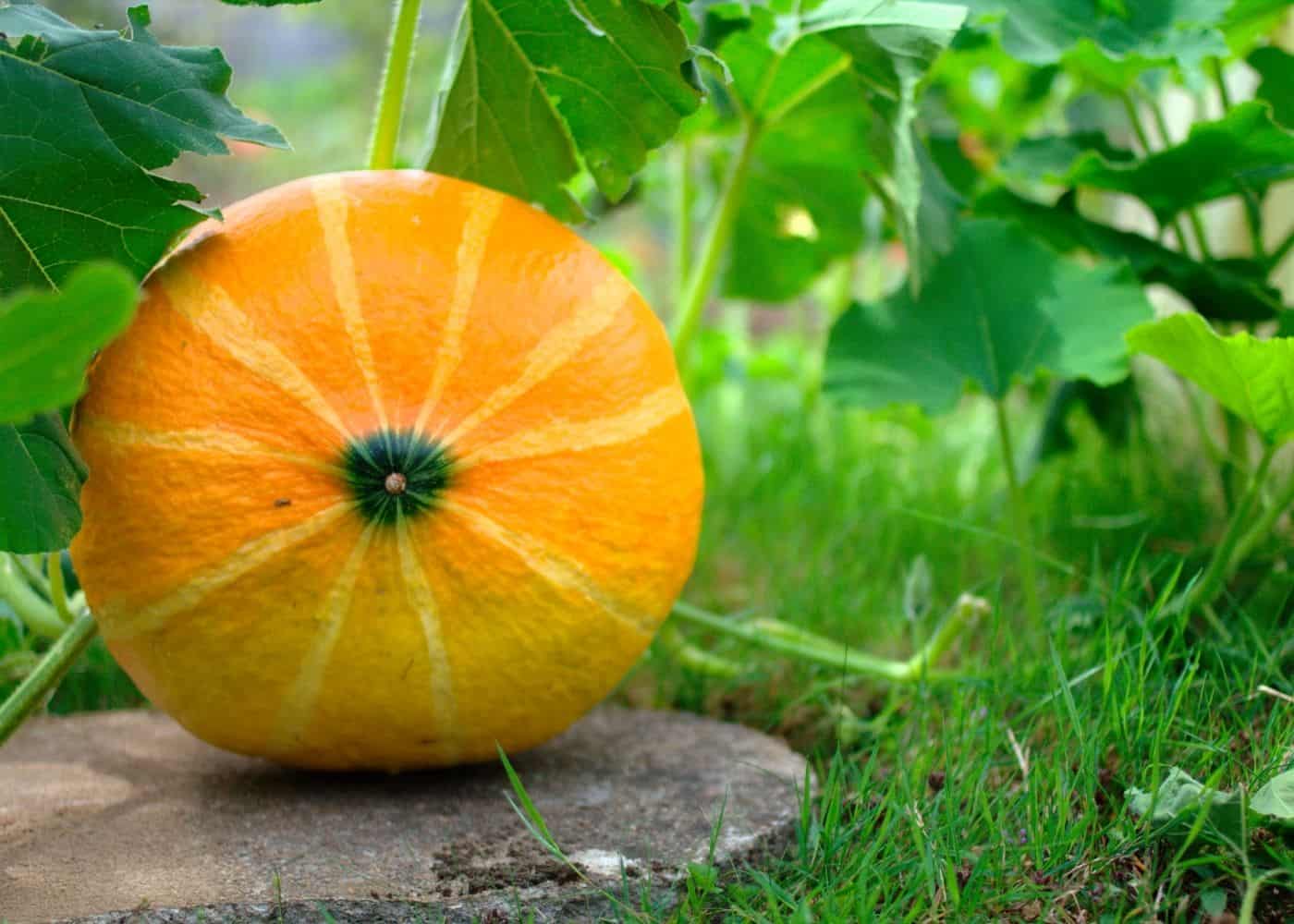
Bad Companions To Avoid Planting Nearby
Planting brassicas (kale, Brussels sprouts, kohlrabi, cauliflower, broccoli, and so on) near pumpkins is not recommended. Brassicas eat up the nutrients in the soil, so try to avoid planting them near pumpkins. In addition, brassicas can deplete pumpkins of the nutrients in their leaves and seeds, hindering your pumpkin plant’s growth.
Avoid growing potatoes near pumpkins and other squashes as well. Potatoes are deep-rooted plants, which means their roots take up immense space in the soil. As a result, pumpkin plants can’t get the nutrients they need if planted with potatoes as these are both very competitive plants! Potatoes are also a bit of a bug magnet in the garden and may lure flea beetles and other leaf-eating bugs to your pumpkin patch.
Lastly, you want to avoid planting your pumpkin plants near fennel because it can stunt your pumpkin plant’s growth. Fennel is generally considered a “bully” companion plant and is not planted too close to other food plants.
Resources
- Heirloom Pumpkin Varieties To Grow
- Popular Blue Pumpkins (Ornamental & Culinary)
- How To Grow Pumpkins Organically
- Recommended Pumpkin Fertilizer
- Plant Partners Companion Planting Book by Jessica Walliser
- See My Favorite Things for Vegetable Gardening


